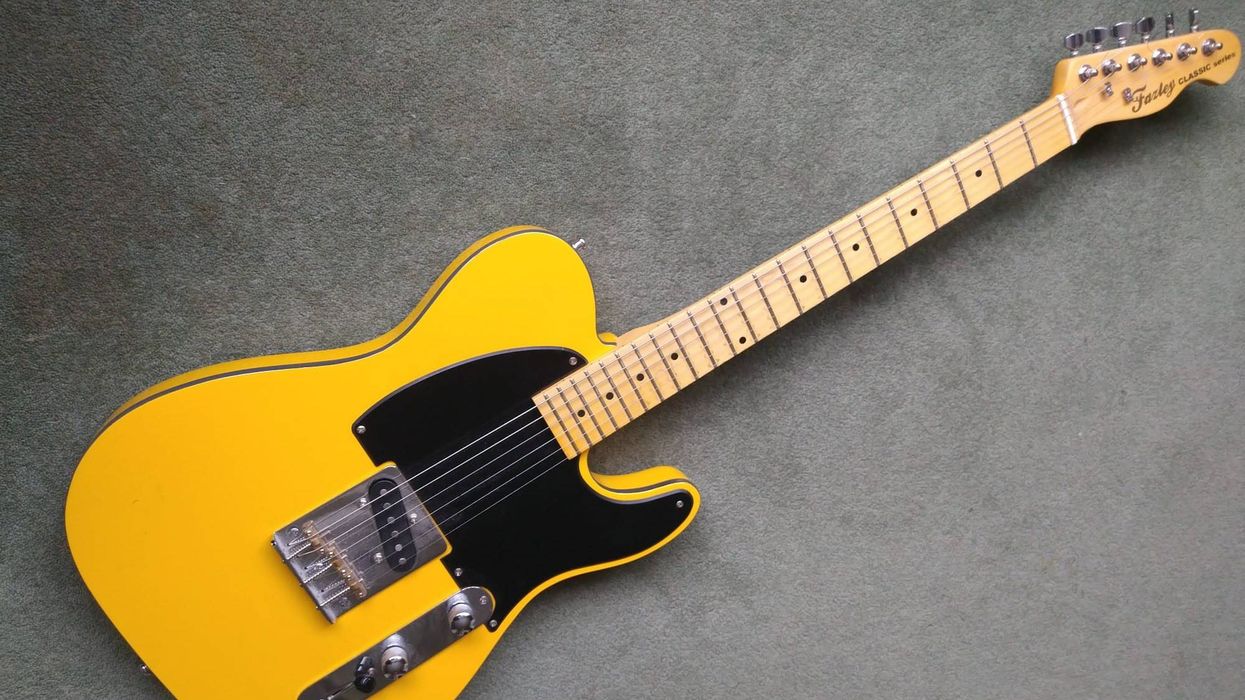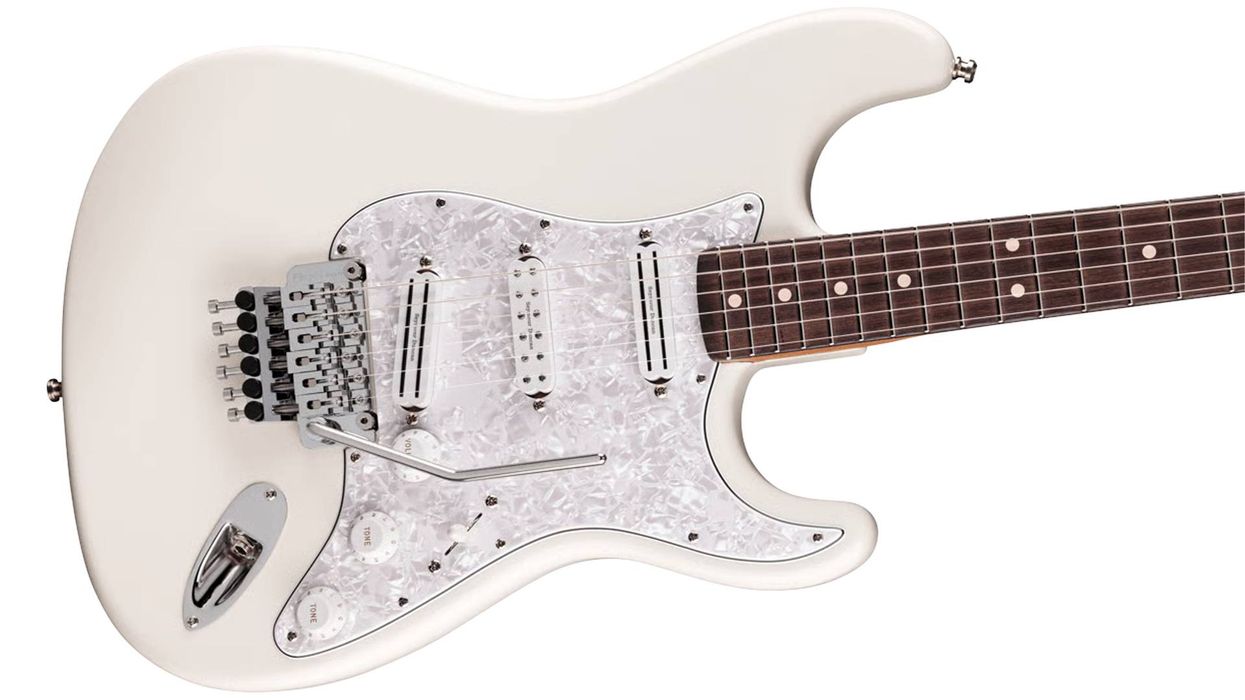If you never saw the new PRS NF 53 and heard Paul Reed Smith say it’s based on a beloved, 1953-model instrument from his collection, you’d probably imagine a goldtop Les Paul—at least if you consider PRS’s typical design leanings. One glance at this new offering, however, makes it clear that Smith had a very different ’53 guitar in mind. But while the NF 53’s Telecaster influence is clear, it’s hardly a conventional take on the type. PRS tweaked just about every bit of the classic T-style blueprint to arrive at a guitar with an extended vocabulary that retains many appealing facets of vintage Telecaster design. The results are likely to cause a stir among forward-thinking players and purists alike.
Single-Cut Above
While the NF 53’s 25 1/2" scale and bolt-on maple neck are very much in the vintage Telecaster spirit, there are significant differences. The neck is built using 3-piece construction. A scarf joint adds strength in the nut-to-headstock transition area and re-enforces the slightly angled headstock. The truss rod is accessed from just behind the nut, and the fretboard is a separate piece of maple that’s glued to the neck after installation of the truss rod. The neck feels great, too, with a rounded-C carve that seems more akin to a ’59 Les Paul than an early ’50s Telecaster, as well as a 10" fretboard radius and a nut width of 1-41/64". Both dimensions mark a kind of compromise between classic Fender and Gibson standards. But moving across the NF 53’s fretboard feels effortless, and I suspect most guitarists will take to the model easily and breezily.
True to vintage T-style form, the NF 53’s solid body is made from swamp ash, a wood that, today, is much harder to find in consistently high-quality and lightweight supplies. PRS works around this challenge, to some degree, by gluing three pieces of ash together. Vintage- and boutique-guitar aficionados romanticize 1-piece bodies and sometimes sniff at anything more than 2-piece. But I’d rather have a relatively light 3-piece ash body than a boat-anchor 1- or 2-piece—and the NF 53’s very comfortable weight, around 7 pounds, is most certainly on the lighter side. (Anecdotally, I have a ’66 Telecaster with a 3-piece body, and it’s one of the best-sounding guitars I’ve ever owned). The size and depth of the body are very traditionally T-style too. But here again, there are differences. The NF 53 has a shorter horn that’s also contoured for improved upper-fret access. Forearm and rib contours enhance playing comfort, and the body’s waist is ever so slightly offset.
“I suspect most guitarists will take to the NF 53 easily and breezily.”
Obviously, a huge part of the classic T-style formula is the single-coil pickups. On this front, the NF 53 deviates from tradition more significantly by using PRS’ Narrowfield DD (“Deep Dish”) pickups, which are single-coil-sized humbuckers. They’re made with deep bobbins for loading on extra coil windings as well as a mix of magnet pole pieces with steel poles in between. They are wired via master volume and tone controls and a 3-way selector switch.
The NF 53’s bridge adds another twist. It employs a steel-base with string-anchor notches rather than through-body stringing, as well as two brass, 3-string saddles with two adjustment bolts each. The vintage-style tuners sport a Kluson-like appearance but with unique ivory-colored plastic buttons.
Twanger or Banger?
Even before you hook up the NF 53 to an amplifier, it rings like a bell, with the bright yet balanced response, piano-like low-string clarity, and the impressive sustain I’d expect from a really good Telecaster. Amplified, you hear all those same qualities as well as a lively edge that is something all its own. The narrow-format humbuckers love overdrive and amps at the brink of distortion—generating snarly, gutsy voices that still offer clear note definition and tight bass tones.
In clean environments, the Narrowfield DDs are punchier and grittier than traditional single-coil T-style pickups with guitar volume at maximum. And when you reduce guitar volume, they sound smoother and tamer than an old-school Telecaster might. That’s no bad thing, though. I prefer the NF 53’s neck pickup sounds to all but a few vintage Telecasters I’ve played (including a long-gone ’63 that still haunts me). It has a full, rich, throaty tone that’s lovely for jazz or ballads and delectably dynamic for blues soloing—especially with a little drive in the mix. In general, the NF 53 offers more bang than twang. But within its appealingly chameleon-like personality, there are still tasty T-style sounds to be found.
The Verdict
Thoughtfully designed and very well put together, the NF 53 is a nifty spin on the world’s first mass-produced solidbody electric guitar, but one that takes the format in new directions. The relative simplicity of the instrument is no impediment to versatility. But the real joy in the NF 53 is that it plays beautifully and offers a wide swath of dynamic, smooth, and often trenchant voices that are all its own.

















